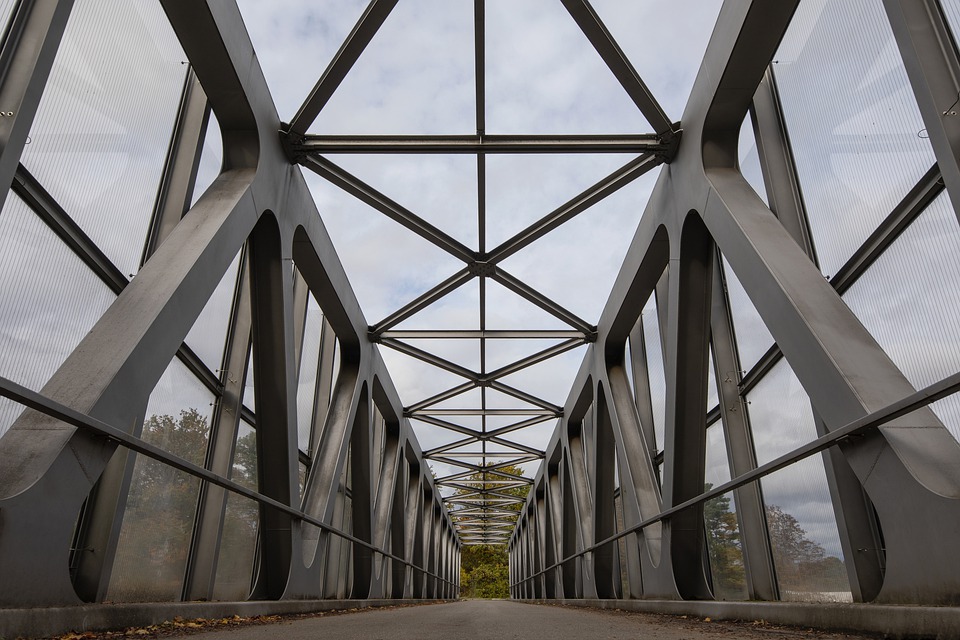Due to its attractive appearance and durability, stainless steel sheet has been widely used for decorative purposes such as exterior walls, roofing and elevators. Today, stainless steel is increasingly used as load-bearing structures in harsh environments. If you look at the entire life cycle of the structure, in most cases, stainless steel is more cost-effective.
More than half of global steel production is used in building structures every year. I-beams, slabs and rebar in buildings and bridges are often made of affordable carbon or low alloy structural steel. Unfortunately, these steels are prone to rust and have a huge economic and environmental impact on the world's infrastructure, affecting roads, bridges, buildings and oil and gas, water and wastewater delivery systems.
Numerous studies have shown that losses due to corrosion in industrialized countries account for 3%-4% of GDP each year. This only includes direct losses from damaged materials and replacement of components, while indirect losses such as lost production, environmental impacts, transportation disruptions, personal injury and fatalities are estimated in equal amounts.
Standard structural steel must be painted or painted metal to minimize corrosion. In addition to the initial cost of painted protection, coated steel will incur expensive inspection, maintenance, or replacement costs throughout its service life. Indirect maintenance costs such as lost production and revenue can also be high. Sometimes it is even impossible to inspect and maintain structural components due to conditions.
In terms of maintenance costs over the life of the structure, the use of stainless steel eliminates coating maintenance and component replacement costs due to corrosion. Stainless steel construction is also a more sustainable solution, helping to reduce emissions and reduce resource consumption and waste.

The choice of stainless steel grade is critical. Austenitic stainless steel 316 (containing 2% Mo) or duplex stainless steel 2205 (containing 3% Mo) has better corrosion resistance due to its molybdenum content, so it is often used in more corrosive environments such as coastal areas, or in the presence of snow melting salts , places with heavy pollution or chemicals. Duplex stainless steels such as 2205 are twice as strong as most austenitic stainless steels, which is another advantage of their use in load-bearing applications.
The main advantages of stainless steel in load-bearing applications include: good corrosion resistance and therefore excellent durability even in corrosive environments; high impact resistance; better ability to maintain strength in fire than carbon steel; good cleanliness and pleasing appearance.
Stainless steel structural components are commonly used in commercial buildings to support glass curtain walls. Stainless steel components require little maintenance like stainless steel ceilings, handrails and street furniture. Fasteners, anchoring systems and support angles that secure wood, stone and masonry, which are often difficult to maintain or replace, will benefit from the good corrosion resistance of structural stainless steel. Wood and masonry can themselves corrode other metals and may absorb moisture and caustic chemicals over time.
For materials, road tunnels are relatively harsh environments. It is expensive to maintain and can have serious consequences in the event of structural damage or fire. Therefore, in tunnel construction, stainless steel is used for lining and supporting frames, maintenance walkways, fixtures and fasteners, lighting and signage supports, and rock bolts for ground support.
Stainless steel is also used in blast and impact resistant structures such as blast and safety walls, gates, safety barriers and bollards. Due to its excellent ductility and strain hardening properties, it can absorb considerable impact forces without breaking.
Engineers are increasingly choosing stainless steel for load-bearing applications that benefit from its good durability, strength, ductility, toughness, formability and attractive appearance. Promote stainless steel structural design guidelines to facilitate the selection of stainless steel for structures that require durability, resilience and sustainability.